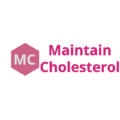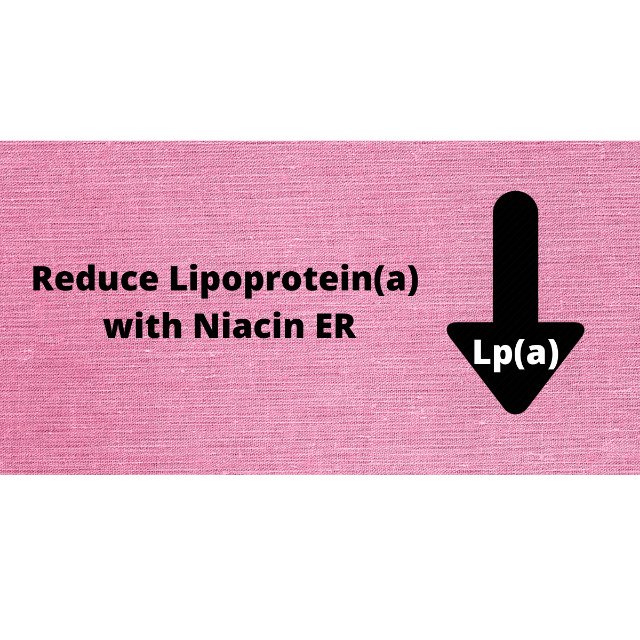Reduce Lipoprotein(a) with Niacin ER
Table of Contents
Introduction
Effectively reduce lipoprotein(a) with niacin ER formulation. Now it is realized that lowering lipoprotein(a) is very essential vs lowering LDL cholesterol. Niacin plain and ER is very effective in reducing lp(a), triglycerides and LDL. Simultaneously it also increases HDL levels in the blood.
Niacin is also known as vitamin b3 or nicotinic acid. Lowering “bad” cholesterol/triglycerides and raising “good” cholesterol helps prevent strokes and heart attacks. Lowering fats may also help reduce the risk of pancreas problems (pancreatitis) in people at risk.
In addition to eating a proper diet (such as a low-cholesterol/low-fat diet), other lifestyle changes that may help this medication work better include exercising, losing weight if overweight, and stopping smoking. Consult your doctor for more details.
Attempts are made to lower lipoprotein(a) with a combination of Omega-3 oils and niacin ER; Statins and niacin ER and also dietary modifications. Excellent results are obtained.
Lipoprotein(a) [lp(a)]:
Lipoprotein(a) is a molecule similar to low density lipoprotein (LDL) and is made from ldl by attaching another protein molecule called as apolipoprotein(a) (apo(a)).
Lipoprotein(a) consists of a low-density lipoprotein (LDL)-like particle attached by a single disulfide bond to the unique glycoprotein apolipoprotein(a) (apo[a]). Apo(a) not only confers distinct structural and functional characteristics to lipoprotein(a) but also controls the rates of lipoprotein(a) synthesis and catabolism.
Lipoprotein(a) and cardiovascular diseases
From recent large population studies and meta-analyses, genome-wide association studies, and Mendelian randomization studies it is identified that:
- Elevated lipoprotein(a) is an independent, causal risk factor for coronary heart disease and other atherothrombotic disorders
- Elevated lipoprotein(a) is also emerging as a key risk factor for calcific aortic valve disease.
- Ever since the strong association between elevated levels of Lp(a) and an increased risk for CVD was recognized, interest in the therapeutic modulation of Lp(a) levels has increased.
- Lp(a) levels >25 mg/dl is a high risk factor for cardiovascular disease.
Reducing Lipoprotein(a) as a new therapeutic target to reduce CVD risk
The two most common target to reduce risk of heart disease are:
- Inhibit cholesterol synthesis using synthetic HMG-CoA reductase inhibitors like statins of different kinds; and
- Remove excess cholesterol from the body using phyto chemicals like sterols, stanols, and other fiber rich products.
- Dietary modifications
The use of statins do not lower lp(a) levels. Dietary modifications also do not have any effect in decreasing levels of lp(a). The method of removal of excess cholesterol by adsorption also is ineffective in reducing your lp a levels.
Several, newer methods are under development. Newer alternatives to statins are also under development.
Newer methods:
Now it is recognized that reducing elevated plasma levels of lipoprotein(a) is a new target for cardiovascular disease.
Recent published studies have provided increasing evidence that lipoprotein(a) [Lp(a)] may be a potential causal, genetic, independent risk factor for cardiovascular disease (CVD).
Lp(a) levels >25 mg/dl are present in ∼30% of Caucasians and 60% to 70% of Blacks.
Currently, Lp(a) pathophysiology is not fully understood, and specifically targeted therapies to lower Lp(a) are not available
However, niacin has been in use since 1955 to lower cholesterol and other purposes. It is observed that niacin also reduces lipoprotein(a).
Niacin to reduce lipoprotein(a)
The most common form of niacin is crystalline niacin. Crystalline niacin is very effective in reducing lp(a). However, crystalline niacin has some side effects.
Side effects of crystalline niacin:
- It causes flushing which everyone cannot tolerate.
- Flushing disappears on its own after a few days of regular use.
- Because of this side effect people are reluctant to take it.
- They discontinue taking niacin after a few days.
To overcome these side effects a new formulation niacin er to lower lipoprotein(a) was developed. Several studies conducted with niacin ER (extended release tablets) are very encouraging. The extended release form of niacin called as niacin er has been found to reduce lipoprotein(a) and increase HDL cholesterol levels. It also reduces LDL cholesterol levels.
Niacin ER to Reduce Lipoprotein(a):
Use of niacin (ER) to reduce TG levels and Increase HDL levels:
It is a general observation that in people who are on statin therapy their TG levels are high and HDL levels are low. If by some means HDL levels increase, cardiovascular events may decrease.
Therefore, the focus was concentrated on finding ways yo increase HDL levels as a target for prevention opportunities. Crystalline Niacin was known to lower ldl and improve levels of HDL. Therefore extend -release niacin was tried to improve lipid profil.
i) Monotherapy:
Niacin ER (extended-release nicotinic acid) is indicated for its use as monotherapy for the treatment of very high TG levels and for raising HDL-C levels.
ii) Niacin ER with statins:
In patients who achieve normal LDL-C by statin treatment yet have high TG and/or low HDL-C, then addition of niacin may lower triglyceride levels and/or increase hDL levels.
There is evidence that the addition of niacin er to statins can reduce atherosclerosis and CVD events. [ ref 1-4].
Niacin ER can effectively modify atherogenic dyslipidemia by lowering TG, increasing HDL-C, [ref 5]
Could increasing HDL levels solve the problem?
No. Lowering LDL, decreasing TG anf increasing HDl with Statin-Niacin ER therapy could not prevent cardiovascular events.
However, a recent large simple trial has failed to demonstrate benefit of adding Niacin ER to statin therapy.6
Now we are nearer to solving the problem. The theory that lipoprotein(a) is a major risk factor for heart disease was discovered in 90’s. But now the mainstream medicine has agreed that lp(a) is an independent risk factor for heart disease. Research is in full swing for finding ways to lower lipoprotein(a).
Niacin ER monotherpay to lower lp(a):
Niacin ER 500mg tablet…..
In one study conducted by N V Artemeva ER niacin 500 mg tablet was used in the trial with 30 men. The study lasted for 24 weeks. During the course of niacin treatment Lp(a) decreased by 28% (p < 0.003), Lp-PLA2 by 22% (p < 0.001), C-reactive protein by 24%
Niacin ER with Fish Oil:
In another separate study Alan F Helmbold used a combination of fish oil and niacin ER 500mg tablet for lowering lipoprotein(a). The study was an observational study following subjects with an elevated Lp(a) (> 70 nmol/L) to assess impact of 12 weeks of combination Omega 3FA (600mg EPA+240mg DHA), niacin 500 mg (ER), and the Mediterranean diet on Lp(a).
Results on Niacin ER with fish oil were as follows:
The average Lp(a) reduction after 12 weeks of combination therapy was 23% +_ 17%
This shows that Mediterranian diet and omega-3 is useful in bringing elevated lp(a) to lower levels. Foods rich in omega-3 is beneficial for people having high levels of lp(a).
Are there any other better methods to reduce your lp(a) levels?
Is reducing lipoprotein(a) with Niacin ER or Niacin ER -Fish oil combination, an ideal solution to reduce the risk of heart disease?
In ways to lower lipoprotein (a) there is a mention that ascorbic acid-lysine method is best method for lowering lipoprotein(a).
Drawbacks of Niacin ER for lowering elevated lp(a) levels:
In order to prevent or reverse cardiovascular diseases targeting lipoprotein(a) is the correct approach. Lp(a) levels increase in the body when our arteries and blood vessels become weak due to deficiency of certain nutrients in the body. Eating saturated or unsaturated fats has not caused the problem, because eating fats do not raise your lipoprotein(a) levels. You are often told reduce eating saturated fats/unsaturated fats.
Niacin ER address only one problem out of the two problems that exist:
- It does reduce your elevated lipoprotein(a) levels floating in the blood.
- Niacin does not remove Lipoprotein(a) that is attached to the blood vessel walls as arterial plaque
Evidence exists to show that the cholesterol present in arterial plaque is mainly lp(a) along with some LDL, calcium deposits and other debris floating in the blood. Some tissue growth also takes place in the arteries. Lp(a) has properties similar to plasminogen. It is highly atherogenic and also atherothrombic.
Improvements over niacin er to lower lipoprotein(a)
Vitamin C lysine proline supplement not only address both the problems but also reverses heart disease:
- It reduce elevated lipoprotein(a) levels floating in the blood.
- It removes Lipoprotein(a) that is attached to the blood vessel walls as arterial plaque.
- It strengthens the arteries by promoting collagen synthesis
- It supports the liver to make normal cholesterol or normal lipid levels.
- It address the root cause of cardiovascular disease and not the symptoms.
Supplements that lower lipoprotein(a) as well as reverse heart disease:
Examples of supplements containing vitamin c lysine proline that help you lower lipoprotein (a) and reverse heart disease are:
Pauling Therapy Essentials Formula …. CLICK HERE TO SEE THE REVIEW
Cardio Multivitamin Synergy Formula …. CLICK HERE FOR DETAILS
Lypro-C (Available in India) …………… Contact Dr Balaram Dhotre; Whatsapp no : 9714738499
Vitacost (Avaulable on Amazon) ……….. CLICK HERE FOR DETAILS
Summary
Genetic and epidemiologic studies indicate that high Lp(a) is an independent risk factor for myocardial infarction and stroke (36–40). Statins and other lipid-lowering medications do not affect elevated plasma concentrations of Lp(a) (41). By contrast, treatment with 4 g of niacin for 5–7 weeks reduces plasma concentrations of Lp(a) by nearly 40% (15). While no outcome studies have addressed this possibility, it is not clear whether niacin as an intervention would result in a favorable clinical outcome in patients with high Lp(a) levels. Knowing the true cause of high lp(a) levels will help in finding a better solution.
Best Niacin ER 500mg Tablets
References
Yamashita S, Maruyama T, Hirano K, Sakai N, Nakajima N, Matsuzawa Y. Molecular mechanisms, lipoprotein abnormalities and atherogenicity of hyperalphalipoproteinemia. Atherosclerosis. 2000;152:271-285. [PubMed] [Google Scholar]


Pingback: Best Niacin ER 500 mg Tablets 2021-Lowers Lipoprotein(a) Increases HDL
Pingback: What causes High Cholesterol? Saturated Fats or Nutrient Deficiency
Pingback: How to Reduce Elevated LDL Cholesterol?